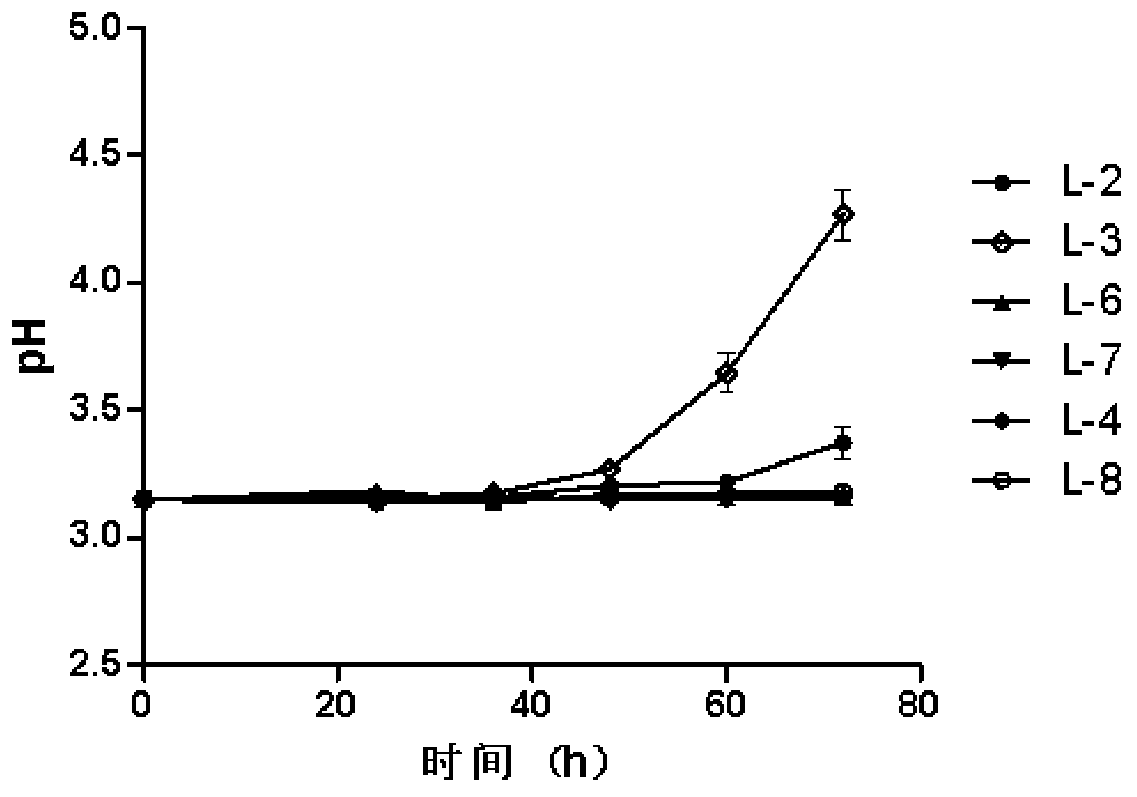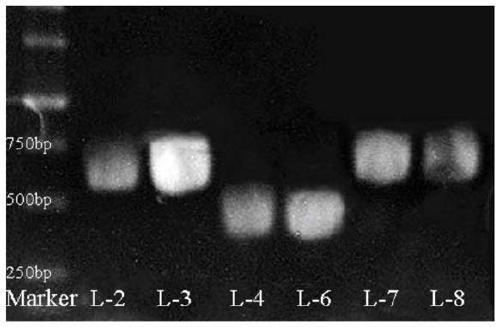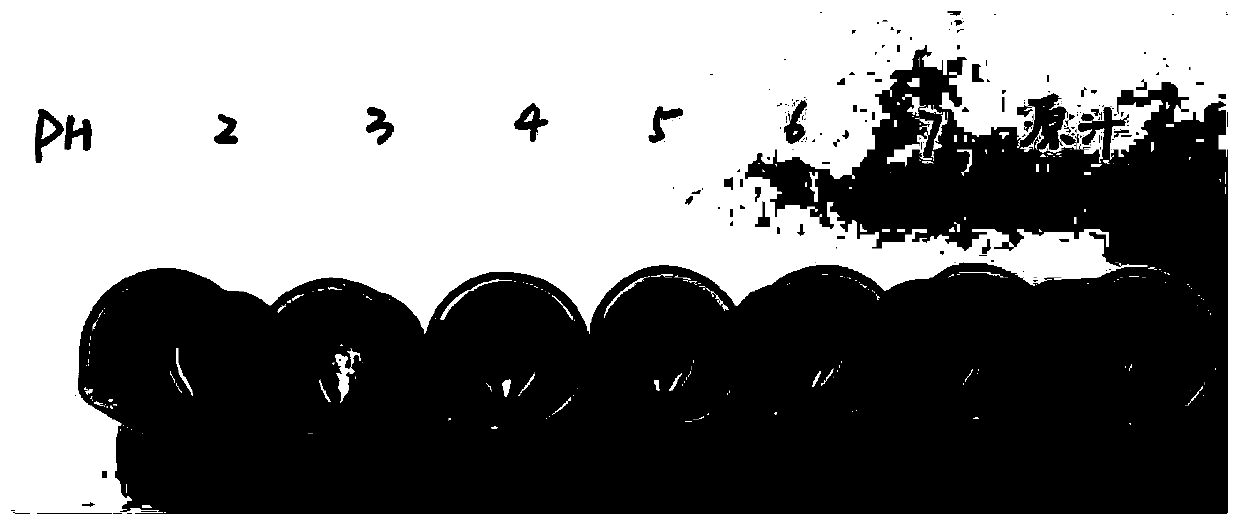Meyerozyma caribbica strain and application thereof
A technology of acid-reducing yeast and strains, applied in the field of microorganisms, can solve the problems of poor degradation ability and poor application of acid-reducing treatment, and achieve the effects of low cost, improved flavor quality, and simple treatment methods
- Summary
- Abstract
- Description
- Claims
- Application Information
AI Technical Summary
Problems solved by technology
Method used
Image
Examples
Embodiment 1
[0021] Screening and isolation of embodiment 1 bacterial strain
[0022] Slightly rotten navel orange and papaya were used as experimental raw materials, chopped with skin and added with 9 times the volume of sterile water, and incubated for 50 minutes in a constant temperature shaker at a speed of 150r / min and a temperature of 28°C.
[0023] Introduce 10% (v:v) cultured sample liquid into liquid Sabouraud medium, and cultivate for 24-48 hours at 150 r / min and temperature of 28° C., and observe until the fermentation liquid becomes turbid.
[0024] Use 20% citric acid stock solution to adjust the pH of the solid Sabouraud medium to 4, and use the coating method to adjust the pH of 10 -4 、10 -5 、10 -6 、10 -7 The fermented liquid of the diluted gradient was evenly spread on the plate, and incubated at 28° C. for 48-96 hours until colonies appeared.
[0025] Number the isolated colonies and carry out expanded culture, pick a small number of colonies and inoculate them in liqu...
Embodiment 2
[0027] Example 2 Bacterial acid-reducing effect test
[0028] First, the overall acid-reducing effects of the obtained 6 strains were evaluated, and the specific methods were as follows:
[0029] Preparation of raspberry juice: mix fresh raspberry fruit and water according to the quality ratio of 1:1, use a juicer (300W) to squeeze the juice at a uniform speed for 1min, and then use a homogenizer (10000rpm) to homogenize for 5min to obtain uniform whole raspberry juice. juice. Then sealed and pasteurized at 80°C for 15 minutes.
[0030] The above-mentioned 6 kinds of non-Saccharomyces cerevisiae were activated and expanded, added to the above-mentioned fruit juice with a volume fraction of 5%, and cultured at a constant temperature of 28°C for 72 hours, during which the pH was measured every 12 hours, and the results were as follows: figure 1 shown.
[0031] from figure 1 It can be seen that the pH of the juice inoculated with L-2 and L-3 strains began to rise 36 hours aft...
Embodiment 3
[0040] Identification of embodiment 3 strains
[0041] 1. Extraction of DNA
[0042] (1) Take 1mL of the bacteria solution to be tested and centrifuge at 10000r / min for 2min, take the precipitate and add 400μL DNA extraction buffer, then boil in boiling water for 10min, then take it out of the ice bath for 10min, and then bathe in 65℃ water for 10min.
[0043] (2) Add 250 μL of 6mol / L NaCl solution and an equal volume of chloroform:isoamyl alcohol (24:1) to it, mix well for 10 minutes, and centrifuge at 13000 r / min for 5 minutes in a centrifuge.
[0044] (3) Take the centrifuged supernatant and add twice the volume of absolute ethanol, mix it upside down, let it stand for 5 minutes, and centrifuge it in a centrifuge at 13000r / min for 5 minutes.
[0045] (4) Discard the supernatant, wash the precipitate once with 500 μL of 70% ethanol, and centrifuge at 13000 r / min for 3 min in a centrifuge.
[0046] (5) Carefully discard the supernatant, dry at room temperature for 3 minutes, ...
PUM
 Login to View More
Login to View More Abstract
Description
Claims
Application Information
 Login to View More
Login to View More - R&D Engineer
- R&D Manager
- IP Professional
- Industry Leading Data Capabilities
- Powerful AI technology
- Patent DNA Extraction
Browse by: Latest US Patents, China's latest patents, Technical Efficacy Thesaurus, Application Domain, Technology Topic, Popular Technical Reports.
© 2024 PatSnap. All rights reserved.Legal|Privacy policy|Modern Slavery Act Transparency Statement|Sitemap|About US| Contact US: help@patsnap.com










